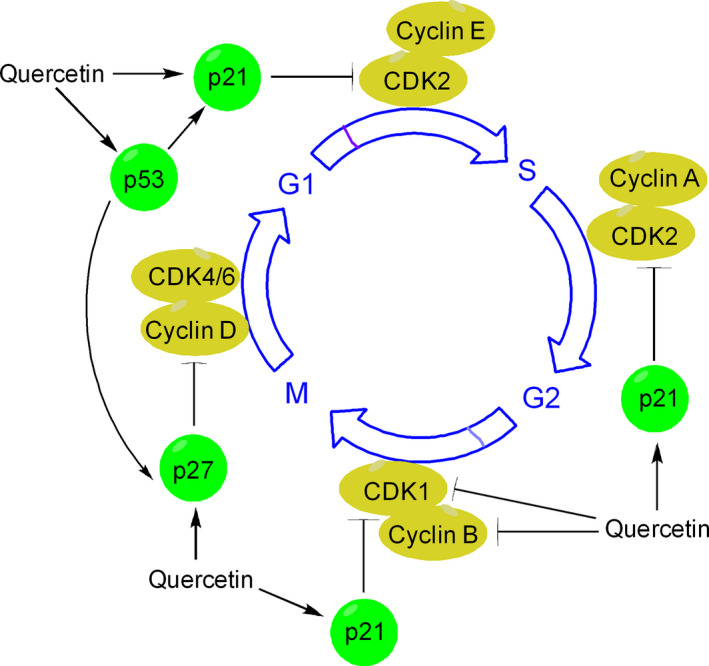Figure 5.

Mechanism of quercetin‐induced cell cycle arrest. Quercetin induces cell cycle arrest in many cancer cells directly by binding to various protein regulators of cell cycle and can affect any of the different phases of cell cycle progression. Quercetin can arrest growth of cancer cells at G1, G1/S or at G2/M phase through its interaction with different regulators. For example, to induce G1 growth arrest, quercetin inhibits cyclin D and upregulates the expression of p21, p27 and p53. p21 is a potent cyclin‐dependent kinase inhibitor and preferentially inhibits the activation of CDK2‐cylcin E complex, leading to subsequent inhibition of CDK‐dependant phosphorylation of pRb and attenuation of E1F2, thereby blocks transcription induced by E2F1. p21 also inhibits the activity of CDK2‐cyclin A and CDK1‐cyclin B which are necessary for orderly progression through S phase and G2/M, respectively. P53 induced by quercetin leads to induction of cell cycle inhibitors such as p21 and p27. p27 can influence cell cycle in several ways. In particular, p27 blocks the activity of CDK4‐cyclin D and CDK6‐cyclin D complexes, causing G1 cell cycle arrest.
